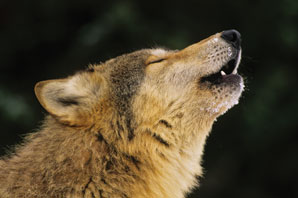Ever wondered how dogs moved out of the cold and into our homes and hearts? Writer and pet-lover Julian Hall examines the evidence in this second instalment of Petplan???s series on the history of pets.
For tens of thousands of years, dogs and people have lived side-by-side. But according to some scientists it???s our canine friends that domesticated us rather than the other way around.
THE DAWN OF DOG
Scientists recently dated the first-known dog at 31,700 years old, after discovering its remains in a Belgian cave in 2008. The Palaeolithic dog is said to have resembled a large Siberian Husky and DNA evidence has shown that early dogs like it descended from wolves.
But how did these prehistoric animals come to take on the mantle of man???s best friend?
WOLVES AS COMPETITORS NOT COMPANIONS
 Previously, scientists believed that primitive hunter-gatherers adopted wolves to help with their search for food, with these animals eventually evolving to become domesticated dogs. However, a pair of American academics has recently
Previously, scientists believed that primitive hunter-gatherers adopted wolves to help with their search for food, with these animals eventually evolving to become domesticated dogs. However, a pair of American academics has recently
challenged this theory.
Dr Brian Hare, director of the Duke Canine Cognition Center and Vanessa Woods, a research scientist at Duke University, argue that rather than potential hunting partners, wolves were initially seen as competitors for food and therefore adversaries.
In fact, when modern humans arrived in Europe around 43,000 years ago, say Hare and Woods, they almost wiped out all large carnivores. But wolves and early dogs didn???t follow Darwin???s ???survival of the fittest??? instinct to stay alive (and evolve), argue Hare and Woods. They say, when it comes to dogs, it was more akin to ???survival of the friendliest???.
In an adaptation of their book, The Genius of Dogs, published in the National Geographic earlier this year, the pair say:
???Most likely, it was wolves that approached us, not the other way around, probably while they were scavenging around garbage dumps on the edge of human settlements. The wolves that were bold but aggressive would have been killed by humans, and so only the ones that were bold and friendly would have been tolerated.???
TAIL WAGGING AND OTHER FRIENDLY SIGNS
These ???protodogs??? (early dogs) became useful allies, able to read human gestures and aid the hunt for food. As time wore on, the domestication progress would mark out these dogs from their wolf brothers and sisters in ever more distinct ways.
???Friendliness caused strange things to happen in the wolves,??? Hare and Woods say. ???They started to look different. Domestication gave them splotchy coats, floppy ears, wagging tails. In only several generations, these friendly wolves would have become very distinctive from their more aggressive relatives.???
The domestication of dogs????? and the diversification of breeds ??? appears to have happened simultaneously across numerous continents. Dog burial sites (some mixed with human sites) have been discovered in the US, Germany, Sweden, Siberia and China, taking in a sweep of time from 12,000 BC to 3,700 BC.
Recently a study by UCLA academic Robert Wayne reported that dogs appear to have a more marked genetic similarity to grey wolves native to the Middle East, suggesting that region was the original location of domestication.
DOGGY TALES FROM AROUND THE WORLD
Wolves have been feared and revered across many cultures over the years, and dogs have been interpreted in good and bad ways too. The recurring theme with domestication, however, is loyalty and an ability to become accepted as another family member.
Inuit and Native American Indian tribes valued the hunting skills and company of wolves and dogs ??? often interbreeding the two ??? and it wasn???t unusual for a family from an American indigenous tribe to have as many as 30 dogs.
As with cats, dogs had a high status in Egyptian culture in particular. They were buried in family tombs and were mourned dramatically, with family members shaving their heads as a mark of respect.
The old joke about the fact that god is dog spelt backwards is given an almost symbolic credence through history, with many peoples revering dog-like gods. For example, the twin of Quetzalcoatl, the Toltec god of goodness and light, was the dog god Xolotl. Meanwhile, in some Indian states the supreme godhead is a form of Shiva (Hindu deity) called Bhairava, who takes on the form of a dog, or has dogs as companions.
THE MODERN POOCH
Across millennia, dogs have found themselves the spoiled and pampered pets of many ??? from deities and royals downwards ??? and have become a byword for companionship. Today whole industries have developed around new ways to pamper them, with medical processes, such as hydrotherapy, developed to improve the quality of a dog???s life.
As with any pet, diet and healthcare are essential, and so is planning ahead with measures like the??insurance offered by Petplan, and also considerations like pet passports, now that our faithful companions can become our travelling companions.
From a feared carnivore to a best friend ??? dogs deserve our respect, admiration and love.
original source: http://blog.petplan.co.uk/04/2013/petplan-feature/the-history-of-pets-part-1-cats/


